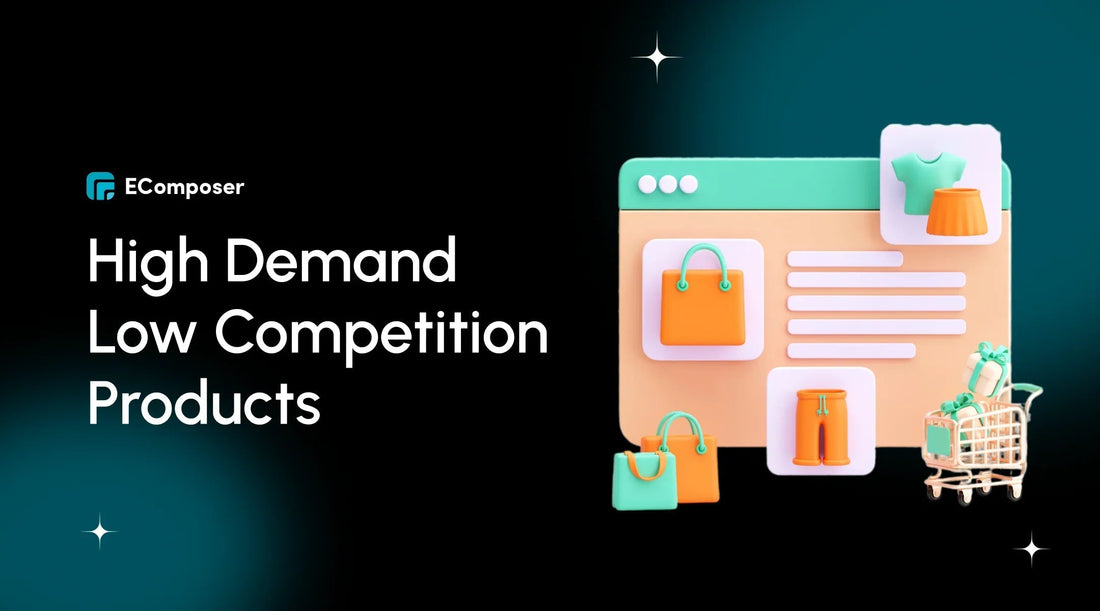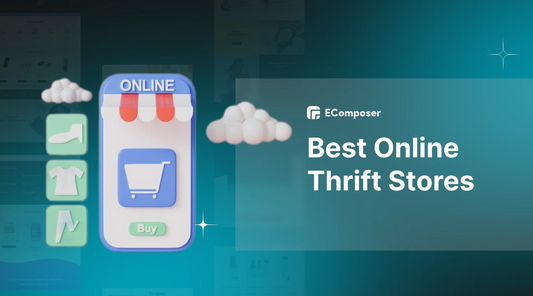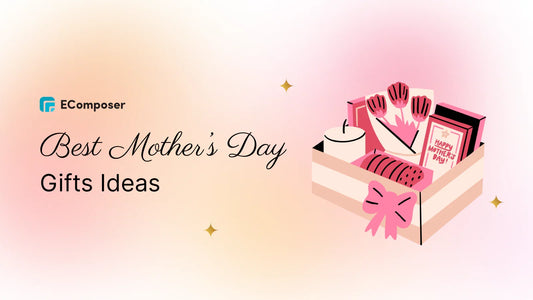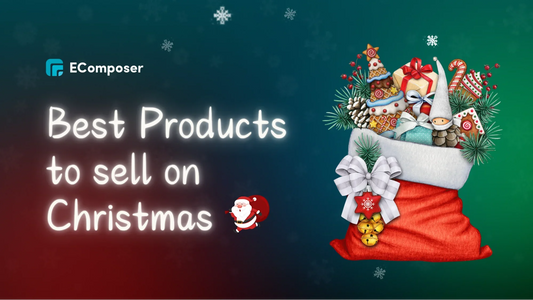Top 33+ High-Demand Products with Low Competition That Actually Sell In 2025

Table Of Contents
High-demand, low-competition products are items with strong customer interest but limited seller presence. They offer a chance to capture sales without entering saturated markets. Identifying them requires checking trends, search volume, and social media engagement. Selling these products allows you to grow faster and stand out from competitors.
You’re looking for a winning product. Let’s not waste time. I've done the exhaustive product research for eCommerce to find the goldmines in today's market. This isn't another generic list. It’s a hand-picked portfolio of 33+ high-demand with low-competition products for 2025. My entire focus was on finding genuinely profitable low-competition products to sell, the kind that let you build a brand instead of just fighting on price. This is your shortcut to finding a winner before the competition does.
What Are High-Demand, Low Competition Products?
High-demand, low-competition products are items that many people actively search for but only a few stores sell. They offer a golden opportunity to capture sales without heavy competition. Think of it with this simple formula:
High Search Volume + Low Seller Saturation = Your Golden Opportunity
This isn't just a theory; it's the core strategy I've used to help launch successful stores. Instead of entering a price war in a bloody-red ocean, you get to be the go-to brand in a clear, blue one. This is how you find those truly unsaturated eCommerce niches.
No matter whether you’re a new eCommerce entrepreneur, an experienced store owner, or a side hustler/marketer, there’s always a way to find products that meet these factors. The section “ How to Find high demand with low competition” will guide you in detail.
Why Should You Focus on a Niche Market with High Demand and Low Competition?
Focusing on a high-demand, low-competition niche allows you to attract targeted customers and avoid saturated markets. This increases your chances of standing out and achieving higher profits.
- Higher Profit Margins. Escape the race to the bottom on price. In a low competition niche, you set the value and can achieve a much higher ROI on your products.
- Cheaper, Laser-Focused Marketing. Stop shouting into the void. A defined audience is more affordable to reach, making your store the obvious choice for their specific needs.
- Become the Go-To Brand. In an unsaturated eCommerce niche, you don't just compete - you dominate. You become the trusted authority that customers seek out first.
- Build a Loyal Fanbase. Passionate niche customers become your best marketers. Their reviews and word-of-mouth recommendations turn a good item into a true Shopify winning product.
33 High-Demand Products with Low Competition (2025)
Finding high-demand products with low competition, especially in a fast‑changing market, requires sharp insight into current consumer trends and robust market research. Popular categories include smart home devices, eco-friendly products, pet accessories, home fitness gear, and car gadgets. Specific examples include LED dog collars, posture correctors, mini projectors, and reusable kitchen wraps.
Key Trends Driving Demand
- Sustainability & Eco-Consciousness: Consumers are increasingly prioritizing products that are environmentally friendly, ethically sourced, and that reduce waste.
- Health & Wellness: This broad category continues to grow, with a focus on preventative health, mental well-being, personalized solutions, and at-home care.
- Home Comfort & Convenience: With more people spending time at home (and often in smaller living spaces), products that enhance comfort, organization, and efficiency are in high demand.
- Niche Hobbies & Personalized Items: People are investing in their passions and seeking unique products that reflect their individuality.
- Pet Products: The humanization of pets continues, leading to increased demand for high-quality, specialized, and often eco-friendly pet items.
- Technology & Smart Solutions (Niche Applications): While general tech is competitive, specific smart devices that solve a particular problem or enhance a niche activity can thrive.
1. Sustainable & Eco-Friendly Products
Image source: Google Trends
Note: In Google Trends, interest level shows the relative popularity of a search term from 0–100, with 100 being its peak. It indicates how often people searched for the term compared to its highest point in the selected period.
This isn't just a trend anymore; it's a core value for a massive, growing customer base. The key is to find products that are both eco-conscious and genuinely better or more convenient. These are some of the best low-competition products for eCommerce because they come with a built-in story.
1. Zero-Waste Deodorants/Personal Care: People are actively looking for plastic-free alternatives. By focusing on refillable deodorants, shampoo bars, or toothpaste tablets, you enter a huge market through a specific, low-competition side door.
2. Bamboo Pajamas/Apparel: It’s all about the story: unbelievably soft, temperature-regulating, and sustainable. While "apparel" is competitive, "bamboo pajamas" is a niche with passionate fans and high perceived value.
3. Reusable Kitchen Goods (Niche): Don't just sell generic beeswax wraps. Go deeper. Think silicone stretch lids for odd-shaped containers or stylish, machine-washable "unpaper" towels. Solve a specific kitchen annoyance.
4. Eco-Friendly Cleaning Sheets (Laundry, Dish): This is a perfect example of a profitable dropshipping product with low competition. They solve multiple problems: no heavy plastic jugs, no mess, and they're eco-friendly. The small, lightweight form factor is a bonus for shipping costs.
5. Solar-Powered Gadgets (Niche): Forget generic power banks. Focus on specific use cases: solar-powered garden lights with unique aesthetic designs, waterproof solar chargers for hikers, or even solar-powered security cameras.
6. Upcycled/Recycled Fashion & Home Goods: This taps into the desire for one-of-a-kind items with a story. Think handbags made from recycled sails or home decor from reclaimed wood. It requires curation but offers incredible brand identity.
2. Health & Wellness (Niche Focus)
Image source: Google Trends
Post-pandemic, we’ve seen a permanent shift towards proactive health and wellness. The secret here is to avoid broad categories and laser-focus on specific problems and solutions.
7. Specialized Supplements/Vitamins: "Vitamins" is saturated. "Magnesium Glycinate for Sleep" or "Lion's Mane Mushroom for Focus" are not. Target a specific outcome for a specific audience.
8. Portable Nebulizers: A medical device that's now a consumer-friendly wellness tool. They offer relief for travelers or those with respiratory issues, and the portable, USB-powered models are seeing a spike in interest.
9. Neuropathy Socks: This is a fantastic example of a problem-solving product. Millions of people search for relief from foot pain, and these socks offer a specific solution. It's a targeted audience with a clear need.
10. Mighty Patches/Acne Patches: A viral trending product in 2025 that shows no signs of slowing down. The market is growing, but there's still room for new brands that offer unique ingredients (like salicylic acid) or better designs.
11. Healing Crystal Candles/Aromatherapy: This combines two powerful trends: home decor and mindfulness. The low-competition angle is in the unique combination of scents, specific crystals, and high-quality, aesthetic branding.
12. Multifunctional Portable Facial Massagers: Think beyond the simple jade roller. Devices offering red light therapy, microcurrents, or warm compresses for at-home facials have huge dropshipping potential and a high perceived value.
13. At-Home Diagnostics and Lab-Testing Services: A higher barrier to entry, but a rapidly growing market. Think food sensitivity tests, vitamin deficiency tests, or hormone panels that offer convenience and privacy.
14. Sleep Optimization Solutions: The "sleep" niche is a goldmine. Look beyond pills to products like weighted sleep masks, magnesium body sprays, or smart red-light night lamps that don't disrupt melatonin.
15. Specialty Nonalcoholic Beverages: The "sober curious" movement is huge. There's a big demand for high-end, adult nonalcoholic options like craft spirits, aperitifs, and functional drinks with adaptogens.
16. Protein Coffee/Mushroom Coffee: A perfect fusion of the fitness, productivity, and coffee worlds. This is one of the top trending products with low competition for 2025 because it serves multiple customer desires in one cup.
3. Home & Lifestyle Micro-Innovations
Image source: Google Trends
With remote work and a renewed focus on our living spaces, small products that offer a big upgrade in convenience or aesthetics are booming.
17. Ergonomic Home Office Gear (Niche): Don't sell chairs. Sell portable laptop risers, under-desk foot hammocks, or vertical mice that reduce wrist strain. Solve the small, annoying pains of working from home.
18. Unique Storage Solutions for Tiny Spaces: This is an evergreen problem. Think slim, rolling storage carts for that awkward space next to the fridge, or aesthetic over-the-door organizers that don't look cheap.
19. Fireplace Air Humidifiers: A perfect social media product trend. It's an aesthetic flame diffuser that also functions as a humidifier. It looks incredible in videos and solves a real need for dry winter air.
20. Smart Home Devices (Niche): Stay away from competing with Amazon Echo. Focus on specific problem-solvers like automatic smart curtain openers, app-controlled plant watering systems, or smart meat thermometers.
21. Mini Vases: A simple, beautiful decor item that's highly Instagrammable. The key is to sell them in curated sets or with unique, minimalist designs. They are low-cost to source and have high giftability.
22. Foldable Storage Boxes: Think aesthetic, linen-covered boxes that look great on a shelf, not plastic bins for the garage. This taps into the massive home organization trend.
23. Motion Sensor Lights: Specifically, the sleek, USB-rechargeable LED light strips. They're an easy, affordable "wow-factor" upgrade for kitchens, closets, and stairways.
4. Niche Electronics & Accessories
Image source: Google Trends
Gadgets are always in demand, but the key is to avoid the mainstream and find accessories that serve a passionate, niche audience.
24. Wireless Lavalier Lapel Microphones: Driven by the creator economy (TikTok, YouTube, Reels), demand for easy-to-use, phone-compatible mics is skyrocketing. The competition hasn't caught up to the demand.
25. Electronic Scale Spoons: A "wow" gadget perfect for viral marketing. It solves a real problem for bakers, people tracking nutrition, or anyone needing precise small measurements. It's a classic Shopify winning product.
26. Unique iPhone Holders: The market for standard car mounts is saturated. Think flexible, magnetic wall mounts for filming kitchen videos or "octopus" tripods that can wrap around anything.
27. Portable Electric Smoothie Blenders: These USB-rechargeable blenders are a massive hit with the health and fitness crowd. The angle is a sleek design, a powerful motor, and good battery life for on-the-go convenience.
28. Wireless Air Compressor Air Pumps (Compact): A super practical tool for a wide audience: cyclists, drivers, and parents with sports balls. The new compact, wireless models are incredibly convenient and ripe for branding.
29. Device Chargers (GaN Technology): The magic word is "GaN." Gallium nitride chargers are much smaller and more efficient. Focus on ultra-compact travel chargers or multi-device desktop chargers that replace a clunky power strip.
5. Personalized & Hobby Items
Image source: Google Trends
These are some of the absolute best low-competition products for eCommerce because they tap into passion and identity, making them highly defensible.
30. Customized Apparel/Home Decor (Hyper-Niche): Don't just sell "custom shirts." Sell custom pet portraits on hoodies, embroidered maps of a meaningful place on a pillow, or custom soundwave art. The more specific, the better.
31. Unique Crafting Tools/DIY Kits: Tap into social media product trends. Curate and sell kits for things you see going viral: DIY punch needle kits, terrazzo coaster-making sets, or modern candle-making kits with unique scents.
32. Specialized Model Miniatures: This is a deep, passionate niche. Find suppliers for DIY miniature "book nooks" that slide onto a bookshelf or modern dollhouse kits that appeal to adults.
33. Fort Building Kits (Educational Toys): Parents are always looking for screen-free, creative toys. High-quality, durable fort-building kits that are easy for kids to use are in high demand with surprisingly low competition.
May you interest
- Best Products to Sell on Shopify
- Most Profitable Products for Different Business
- Best Dropshipping Products to Get High Profit
- Most Profitable Print On Demand Products to Sell ...
- Best Dropshipping Products With High-Profit Margins
- New Trending Products to Sell online
How to Find High-Demand Products with Low Competition
To find high-demand products with low competition, focus on emerging trends and niche markets. Utilize tools like Google Trends and Amazon Bestsellers to identify rising interest, then cross-reference with patent databases and market analysis reports to assess competitive landscapes. Look for gaps where demand is present but current offerings are limited or inadequate.
1. Spot the Trend with Google Trends
Your goal is to find products on a steady upward climb, before they become saturated.
- Access Google Trends and type in a general product category (e.g., "home office," "pet accessories").
- Look at the "Related queries" section and filter by "Rising." This shows you the breakout search terms that are just starting to gain traction, the essence of Google Trends product validation.
2. Confirm Demand with Market Research
A trend is useless if no one will actually pay for it. Now, we confirm buying intent.
- Take your promising keyword and use a SEO tool to check its monthly search volume.
- Search the product on TikTok, Instagram, or Reddit. Look for genuine excitement in the comments ("Where can I get this?!")—this is your market demand analysis.
3. Analyze the Competition
Now we see if there’s actually room for you. This is where we find the unsaturated eCommerce niches.
- Search your product keyword on Amazon and Etsy.
- Look at the top 3-5 organic results. If they have fewer than 300 reviews, it's a huge green light. A good Amazon BSR with low reviews is the ultimate sweet spot.
4. Use AI to Accelerate Research
Use AI as your research assistant to streamline and accelerate the entire process.
- Ask ChatGPT to "brainstorm 10 niche audiences" for your product idea.
- Use tools like Helium 10 or Jungle Scout to get instant data on sales estimates, keyword difficulty, and profitability. This automates your competitive product analysis.
5. Validate Product demand & Profitbility
Validating product demand and profitability is crucial for success in any market. With consumers becoming more discerning and platform competition intensifying (e.g., TikTok Shop's rapid rise), a data-driven approach is essential.
Step 1: The Demand Check (Are People Actively Looking?)
First, we confirm with data that the interest is real, growing, and not just a one-week fad.
- Google Trends Deep Dive: Look at the 5-year trend line. Is there a consistent, predictable pattern (seasonal vs evergreen products), or even better, a steady upward climb?
- The Virality Test: Search for the product on TikTok and Instagram. Are new videos being posted this week? Are people in the comments asking for links? High engagement on recent posts is a powerful signal of a viral trending product in 2025.
- Keyword Growth: Use a keyword research tool to check the search volume trend for the last 3-6 months.
Step 2: The Competitive Analysis (Is There Room for Us?)
Demand is great, but not if you're walking into a buzzsaw. We need to confirm the low competition part of the equation.
- The Amazon Review Rule: Search your main product keyword on Amazon. As we said before, if the top sellers have fewer than 200-300 reviews, the door is wide open.
- The Keyword Difficulty Score: In an SEO tool, check the "Keyword Difficulty" for your main product term. A score under 30 is fantastic.
- Check the Ad Space: Search for your product on Google. Are the first four results all ads from massive brands? If so, it might be an expensive fight. If you see few or no ads, you've found an open lane to attract customers.
Step 3: The Profitability Check (Will This Actually Make Money?)
This is where the dream meets the spreadsheet. We need to run the numbers to ensure you can build a healthy business. This is where a product profitability calculator or a simple spreadsheet becomes your best friend.
-
The Core Formula: The math is simple but non-negotiable:
Potential Sale Price - (Cost of Product + Shipping Fees + Marketing Cost Per Sale) = Your Net Profit - The 30% Margin Rule: I consistently target a minimum net profit margin of 30%. Why? This buffer protects you from unexpected shipping increases, customer returns, and ad cost fluctuations.
-
The Quick Validation Scorecard: To pull this all together, I use a simple scoring system. Give your product a point for each "yes":
- Is the Google Trend stable or growing? (1 pt)
- Are the top Amazon sellers under 300 reviews? (1 pt)
- Is the Keyword Difficulty under 30? (1 pt)
- Can you achieve a 30%+ net profit margin? (1 pt)
- Is there recent buzz on social media? (1 pt)
If you can confidently score a 4 or 5 on this list, you have likely found an excellent, high-demand, low-competition product worth testing.
Avoiding Saturation and Short‑Lived Trends
Focus on products addressing fundamental, evolving needs rather than fleeting novelties. Analyze long-term data for sustained growth and seek strong underlying drivers like technological shifts or societal values, ensuring your offering solves a genuine, enduring problem.
Here’s how to avoid the mistakes that sink most stores.
Know the Product Life Cycle
Our goal is to enter during stages 1 or 2 and build a defense before stage 3 hits.
- Introduction → Growth: The sweet spot. High demand, low competition.
- Saturation → Decline: The danger zone. The market is flooded, prices drop, and the trend dies.
How to Spot Saturation Early
Keep an eye out for these red flags. They're your early warning system.
- The Amazon Flood: You suddenly see a dozen new, identical listings for your product.
- The Price Wars: Competitors begin aggressively undercutting your price.
- Ad Overload: You can't scroll social media without seeing an ad for your product.
3 Ways to Stand Out and Protect Your Profits
This is how you turn a product into a real brand that can't be easily copied.
- Branding & Packaging: A competitor can copy your item, but not your brand. A professional look and memorable unboxing experience justify a higher price.
- Micro-Niche Positioning: If the main market gets crowded, go deeper. Become the go-to brand for a specific type of customer (e.g., "blenders for hikers").
- Bundle & Upsell: Sell a complete solution, not just a product. Bundling a main item with complementary accessories makes your offer the obvious choice and increases your average order value.
Best Tools & Resources for High-Demand Product Research
To find high-demand products, use tools that track market trends, consumer interest, and competitor activity. Platforms like Google Trends, Exploding Topics, and Jungle Scout reveal search volume, rising trends, and Amazon competition insights. Tools such as SimilarWeb and Niche Scraper also help evaluate competitors and uncover trending products in targeted niches.
Here’s a closer look at the key tools and resources:
|
Tool |
My Go-To Use Case |
My Quick Review |
|
Google Trends |
Free Demand Validation |
This is always my first stop. It’s a free and incredibly powerful way to see the true, long-term interest in a product idea and perform initial Google Trends product validation. Is the trend going up or down? Is it a predictable seasonal product? Google Trends tells you in seconds. |
|
Helium 10 / Jungle Scout |
Serious Amazon Research |
If you're serious about selling on Amazon, one of these is non-negotiable. They are paid tools, but the investment pays for itself. They give you the hard data—sales estimates, Amazon BSR history, and competitor stats—you need to make smart, profitable decisions. |
|
TikTok Creative Center |
Finding Viral Products |
This is my secret weapon for spotting social media product trends before they hit the mainstream. You can see the top-performing ads in any category, giving you a direct look at what products are grabbing attention and converting right now. It's a free goldmine. |
|
Etsy & Alibaba |
Sourcing & Niche Spotting |
I use these two platforms for a reality check. I browse Etsy to find unique products and see what's popular in low competition niches. Then, I search for that product on Alibaba to see if I can source it and to get a ballpark idea of my costs and potential profit margin. |
|
ChatGPT or Perplexity |
AI-Powered Brainstorming |
This is like having a brilliant marketing strategist on call 24/7. I use it for AI-driven product idea generation. I'll feed it a product idea and ask, "What are 10 niche audiences for this?" or "List 5 potential unsaturated eCommerce niches related to home fitness." It's incredibly fast for expanding your possibilities. |
Explore more: Best Product Research Tools Must-Have For Your Store
Launch Strategy for High-Demand, Low Competition Products

(Source: Clothing webpage template)
Launching a high‑demand, low‑competition product works best with a validate‑first approach, starting small through dropshipping or micro‑batches. Use precision ads, SEO, and niche content to drive early traffic while building long‑term visibility. Leverage influencers and user‑generated content to gain instant trust and social proof for faster growth.
1. Start Small to Validate
- Your first goal is to prove the concept with minimal risk. Don't go all-in until you have your first sales and customer feedback.
- Test the waters by either dropshipping the product or placing a small "micro-batch" order of just 25-50 units.
2. Run Precision Ads
Focus your ad spend on platforms built for discovery, where new products thrive.
- TikTok Spark Ads: Use for impulse-buy products. Promote authentic, organic-looking videos that feel like a real recommendation, not a corporate ad.
- Instagram Reels: Ideal for visual demos. Create satisfying videos showing your product in action to build desire and trust quickly.
3. Build Your SEO Foundation
Create a long-term, free source of customers by ranking on Google for what people are searching for.
- Focus on long‑tail keywords by creating blog posts that address highly specific questions (e.g., "how to use a wireless mic with an iPhone").
- Create Niche Content: Become the go-to expert. This builds trust and attracts your perfect customer.
4. Leverage Influencers & UGC
Build instant trust when you have none. This is your shortcut to social proof.
- Micro-Influencers: Partner with smaller, niche influencers (5k-20k followers) for affordable, authentic content you can use in your ads.
- User-Generated Content (UGC): Encourage your first customers to share photos with their product for a discount. This is the most powerful marketing content you can get.
Common Mistakes & Risk Mitigation
Many sellers fail by chasing viral fads without validating demand, leading to short-lived success. Others ignore true profit margins or rely solely on one sales channel, risking sudden losses. To mitigate these risks, validate trends with data, ensure 30%+ net margins, and diversify your sales platforms.
Mistake 1: Jumping on a Hyped Fad Without Validation
A product going viral on TikTok doesn't automatically make it a good business.
Always run the product through your validation checklist. A true trend has a stable or growing search history on Google Trends, while a fad is often a sharp spike followed by a crash. Don't confuse hype with actual, sustainable demand.
Mistake 2: Ignoring Your Real Profit Margins
Revenue is vanity, profit is sanity. Getting excited about a $50 sale is pointless if it costs you $49 to make it happen.
Before you commit, calculate everything. Use a spreadsheet or a product profitability calculator to account for the product cost, shipping fees, transaction fees, and estimated ad spend. If you can't hit a 30%+ net profit margin, find a different product.
Mistake 3: Relying Entirely on a Single Channel
Building your entire business on Amazon FBA, Etsy, or relying only on TikTok ads is risky. An algorithm change or account suspension could wipe you out overnight.
Start with one channel, but have a plan to diversify. The ultimate goal is to have your own Shopify store as your central hub, using platforms like Amazon, Etsy, or social media as spokes to drive traffic back to the brand you own and control.
Start Selling Today!
The search for high-demand, low-competition products isn’t about finding a unicorn; it’s about having a smart system. You now have the list and the blueprint, from initial product research for eCommerce to a successful launch. Stop chasing saturated trends. Your path to a truly profitable low-competition product to sell is clear. The only thing left to do is start the hunt. Your next winning product is waiting for you.





















0 comments